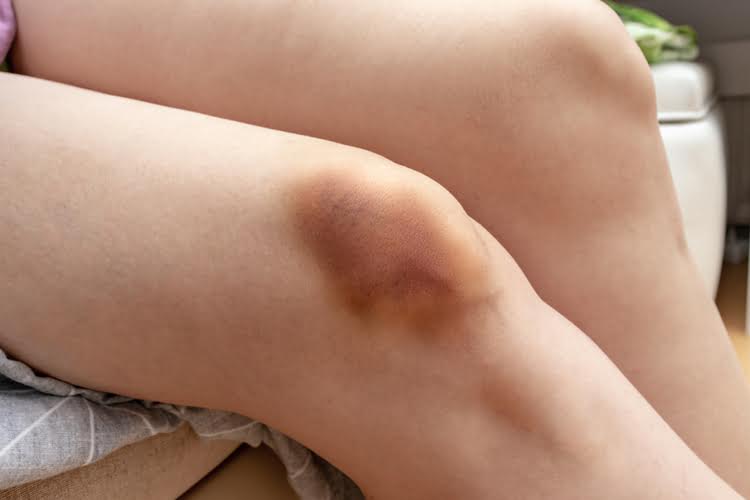Content
- How Long Will It Take For Alcohol To Leave Your Body?
- Interaction Between Alcohol And Exercise: Physiological And Haematological Implications
- Breastfeeding And Alcohol
- So Why Do Alcohols Effects Hit People So Differently?
- Find Drug And Alcohol Detox Treatment Centers Near You
- Find Your Treatment That Works For You!
Finding out how long alcohol can stay in your system is a common question. After all, you do not want to risk trying to drive if there is still any alcohol left in your system.

However, when these activities include alcohol, it can be a dangerous mix. When the rate of consumption exceeds the rate of detoxification, BAC will continue to rise. “After you drink too much and wake up with a hangover, the most important thing is rehydration,” effects of alcohol Michelfelder said. A recent study suggests that downing a mess of asparagus leaves may counteract the toxic effect alcohol has on the liver. A standard 1.5-ounce shot of liquor is a drink, but most cocktails boast at least a couple of shots.
How Long Will It Take For Alcohol To Leave Your Body?
It is estimated that between 90% and 98% of all alcohol that enters the body is metabolized and absorbed. The remaining alcohol is then expelled from the body through sweat, urine, vomit, and feces. Alcohol leaves the body at an average rate of 0.015 g/100mL/hour, which is the same as reducing your BAC level by 0.015 per hour. For men, this is usually a rate of about one standard drink per hour. However, there are other factors that affect intoxication level that will cause BAC to rise more quickly, and fall more slowly.

Weight – Body weight has little impact on the speed with which the body processes alcohol, but it can greatly influence BAC and intoxication level. Alcohol dehydrogenase breaks down almost all of the alcohol consumed by light, social drinkers.
As a general rule, most individuals process one standard drink per hour. Due to several physiological reasons, alcohol is metabolized differently by women than it is men and will stay in a woman’s system longer. This is largely due to the fact that women tend to have a higher percentage of body fat and lower percentage of body water compared to men. This means that a man’s body will automatically dilute the alcohol more than a woman’s, even if the two people are the same height and weigh the same amount. Hormone levels also affect the body’s ability to process alcohol, and women will experience higher BACs drinking alcohol right before menstruation.
Interaction Between Alcohol And Exercise: Physiological And Haematological Implications
Many people mistakenly believe that having no measurable BAC means they have no alcohol in their system. On the contrary, BAC is merely a measure of alcohol’s concentration in the blood which is filtered rapidly and on a continuous, unending basis. Subsequently, alcohol can only be detected in the blood for several hours after the last drink.
To combat inaccurate readings, you might be asked to give a second urine sample a half hour after the first one. This serves as a comparison to give a better picture of how long the alcohol has been in the bladder. Everybody is different in how many drinks they need to reach a given BAC. For a man who weighs 180 pounds, three drinks will put him at .06.

If you have two shots of vodka one after the other, it will take two hours to get sober again. 0.05% – At 0.05% BAC, the average person may exhibit altered and exaggerated body movements and habits, such as speaking louder, poorer vision, and slurring words. Nothing will speed up the rate of detoxification, but the effective metabolism of alcohol can be limited by medications and liver damage.
Breastfeeding And Alcohol
If the BAC is above 0.02, it is considered to be at an unsafe level for safety-based tasks such as driving. Typically, alcohol is ingested through the mouth and moves to the stomach, where it begins to be absorbed by the body through our blood. In fact, roughly 20% of alcohol is absorbed through the stomach and deposited into the bloodstream before being sent directly to the brain and other organs. Most heavy drinkers or those who engage in binge drinking, such as those with alcohol use disorder , tend to process alcohol faster than moderate, occasional, and first-time drinkers.
How to Get Rid of Alcohol Breath: What Works (and What Doesn’t) – Healthline
How to Get Rid of Alcohol Breath: What Works (and What Doesn’t).
Posted: Mon, 26 Apr 2021 07:00:00 GMT [source]
Instant drug testing kits in bulk to conduct pre-employment, random, and post-accident drug testing kits. So it converts it to carbon-di-oxide, which can be easily eliminated.
So Why Do Alcohols Effects Hit People So Differently?
Many people believe that an alcohol metabolite called ethyl glucuronide can be detected by ETG tests for about 80 hours. But a 2007 study published in the journal Alcohol and Alcoholism found that ETG tests failed to detect alcohol more than 26 hours after consumption. Fatty Liver Nonalcoholic fatty liver disease or NASH occurs due to the accumulation of abnormal amounts of fat within the liver. Treatment for fatty liver includes avoiding certain foods and alcohol. Exercise, weight loss, bariatric surgery, and liver transplantation are treatments for fatty liver disease. Though several factors like age, weight, sex, and genetics can affect how alcohol affects you, it’s best to know your limitations.

Eating food can also help to absorb some of the alcohol in your system, although it won’t lower your BAC. Regardless of what you have heard or read, a cold shower, cup of coffee, or exercise to not affect your BAC. Alcohol is alcohol, and it doesn’t matter what you drink, just how much of it you drink. Figure 1.10Alcohol moves from the GI tract through the portal vein to the liver.
Find Drug And Alcohol Detox Treatment Centers Near You
So, as soon as you drink it, your body starts working on getting it out of your system ASAP. That’s why it’s worth keeping tabs on how a drink makes you feel well before you get to that point, so you can know when it’s time to take a break or cut yourself off. You’re legally drunk once your BAC hits .08 percent or higher — the point at which it’s considered unsafe to drive. And the only way to know your BAC for sure is with a breath, blood, or urine test.

This is why women experience higher BACs right before menstruation as their hormones are shifting. The rate that alcohol can stay in your system depends on a variety of factors. Keep your consumption to a few drinks per week, and avoid binge drinking. Also, be sure to have a ride lined up if how to flush alcohol out of your system you are drinking away from home. Even if you are below the legal limit, it’s never safe to drive with any amount of alcohol consumption. Urine tests can detect alcohol long after you’ve had your last drink. The average urine test can detect alcohol between 12 and 48 hours after drinking.
When you drink alcohol, the heart rate speeds up, and blood vessels in the skin widen , which is called vasodilatation. This results in a warm and flushed feeling of the skin, which then triggers sweating. Since most people drink in the evening or at night, it is common to have night sweats. The body has a natural way to “get rid” of the acetaldehyde—a second liver enzyme, present in the mitochondria, is acetaldehyde dehydrogenase . This enzyme metabolizes acetaldehyde to acetic acid (Figure 1. 11), which is inactive. The acetic acid is eventually converted in the cell into carbon dioxide and water.
- Before we go into the details, let’s talk about what’s considered a drink.
- SELF does not provide medical advice, diagnosis, or treatment.
- Matt covers the latest drug trends and shares inspirational stories of people who have overcome addiction.
- In general, the liver can process one ounce of liquor in one hour.
Maintaining a passion for words, she took on a variety of projects where her writing could help people . Reach out to a dedicated treatment provider and learn how you can create the life you want. The material in this site is intended to be of general informational use and is not intended to constitute medical advice, probable diagnosis, or recommended treatments. All products and services featured are selected by our editors.
It’s important to note that the more you drink, the longer alcohol stays in the system. If someone’s blood alcohol content is 0.08, it would take about five hours and 20 minutes for the body to metabolize the alcohol. It typically takes a person with a BAC of 0.20 anywhere from 12 to 14 hours to reach sobriety. Alcohol — or ethanol — tests can detect alcohol metabolites in urine, breath, saliva, sweat and blood for between two and 80 hours.
Contact a treatment provider today to learn about rehabilitation options. The amount of water in the body also goes down with age, contributing to a higher BAC. An older person is additionally more likely to be taking medication and this affects the liver as well. All of these factors mean that alcohol is processed by the body at a slower rate. Once alcohol is in the bloodstream, it can only be eliminated by the enzyme alcohol dehydrogenase, sweat, urine, and breath.
 Avatud: E-R: 10:00 - 18:00
L: 10:00-15:00 P: Suletud
Avatud: E-R: 10:00 - 18:00
L: 10:00-15:00 P: Suletud 
